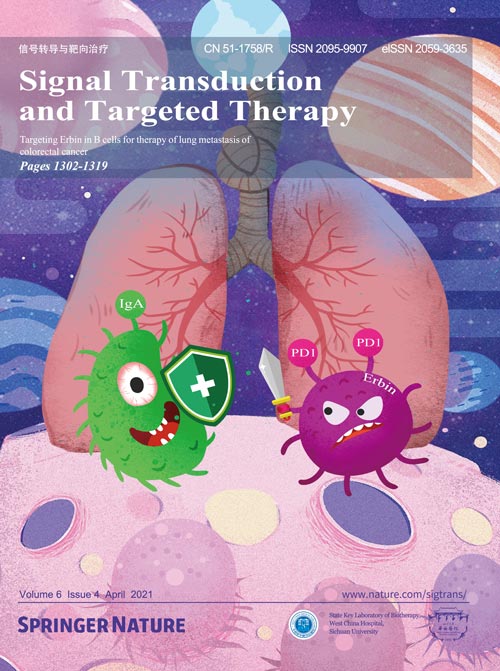Volume 6 Issue 4, Apr 2021:
Article
Cathepsin L plays a key role in SARS-CoV-2 infection in humans and humanized mice and is a promising target for new drug development
Miao-Miao Zhao,Wei-Li Yang
ORCID: orcid.org/0000-0003-3646-7772,Fang-Yuan Yang,Li Zhang,Wei-Jin Huang,Wei Hou,Chang-Fa Fan,Rong-Hua Jin,Ying-Mei Feng,You-Chun Wang
ORCID: orcid.org/0000-0001-9769-5141 &…Jin-Kui Yang
ORCID: orcid.org/0000-0002-5430-2149
To discover new drugs to combat COVID-19, an understanding of the molecular basis of SARS-CoV-2 infection is urgently needed. Here, for the first time, we report the crucial role of cathepsin L (CTSL) in patients with COVID-19. The circulating level of CTSL was elevated after SARS-CoV-2 infection and was positively correlated with disease course and severity. Correspondingly, SARS-CoV-2 pseudovirus infection increased CTSL expression in human cells in vitro and human ACE2 transgenic mice in vivo, while CTSL overexpression, in turn, enhanced pseudovirus infection in human cells. CTSL functionally cleaved the SARS-CoV-2 spike protein and enhanced virus entry, as evidenced by CTSL overexpression and knockdown in vitro and application of CTSL inhibitor drugs in vivo. Furthermore, amantadine, a licensed anti-influenza drug, significantly inhibited CTSL activity after SARS-CoV-2 pseudovirus infection and prevented infection both in vitro and in vivo. Therefore, CTSL is a promising target for new anti-COVID-19 drug development.
